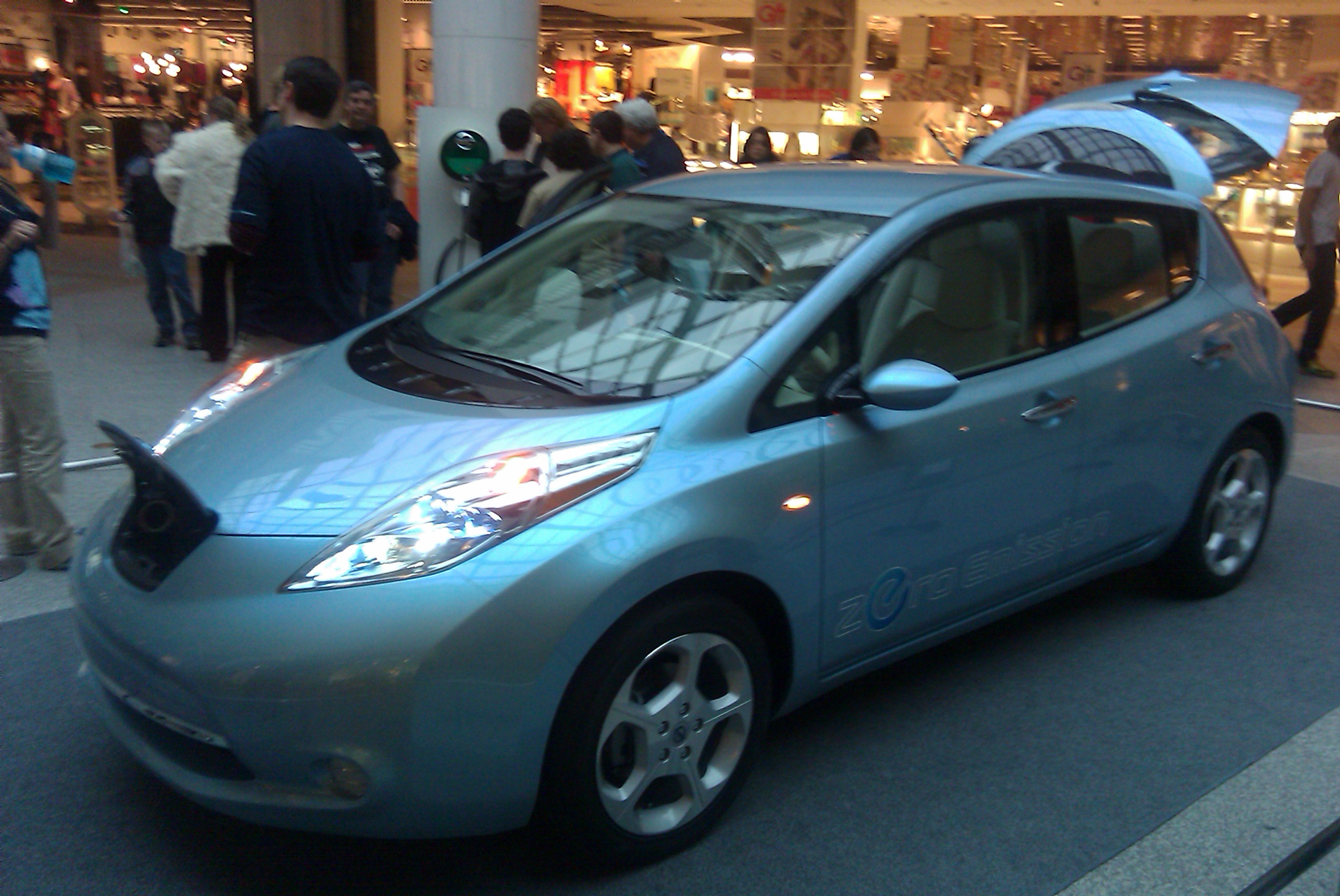 [see part 1 from Sept 2008 and part 2 from April 2009]
[see part 1 from Sept 2008 and part 2 from April 2009]
I have a big pile of electric vehicle (EV) information and developments to write about since last April, but no time no time no time so this will just be a quick post to write about the Nissan LEAF.
I’ve written at length about Tesla and their Roadster sports car (see Part 2 above) and pretty much everyone has seen that car in media reports by now. Of course, it’s wildly expensive and somewhat impractical, but it’s the first real EV car — a real, highway capable, four wheel car, in volume production and showing up on streets all over the US and Europe now.
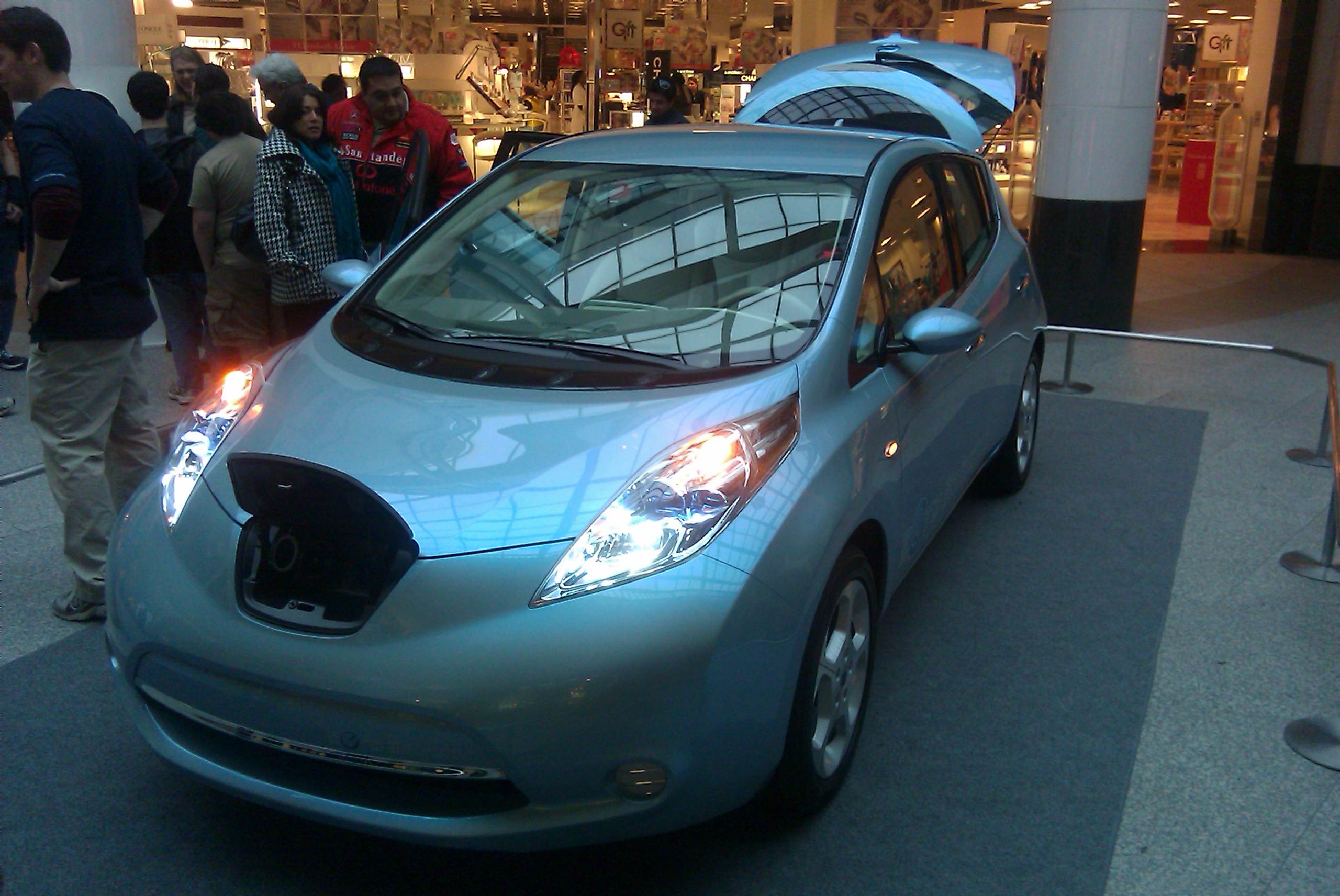 But that’s hardly the car for the average Johnny Paycheck. But by this fall, two new models will be in dealerships and in the hands of consumers and getting a ton of press: the Nissan LEAF and the Chevy Volt. GM is increasingly betting the farm on the Volt so you’re seeing it all over TV, in brand advertising and the inevitable gee-whiz TV reports about EVs and energy independence. But the Volt won’t actually be available for sale until November, and even then it’s going to be a limited launch in a few select markets (as I write this, those markets appear to be California, Michigan and Washington DC.)
But that’s hardly the car for the average Johnny Paycheck. But by this fall, two new models will be in dealerships and in the hands of consumers and getting a ton of press: the Nissan LEAF and the Chevy Volt. GM is increasingly betting the farm on the Volt so you’re seeing it all over TV, in brand advertising and the inevitable gee-whiz TV reports about EVs and energy independence. But the Volt won’t actually be available for sale until November, and even then it’s going to be a limited launch in a few select markets (as I write this, those markets appear to be California, Michigan and Washington DC.)
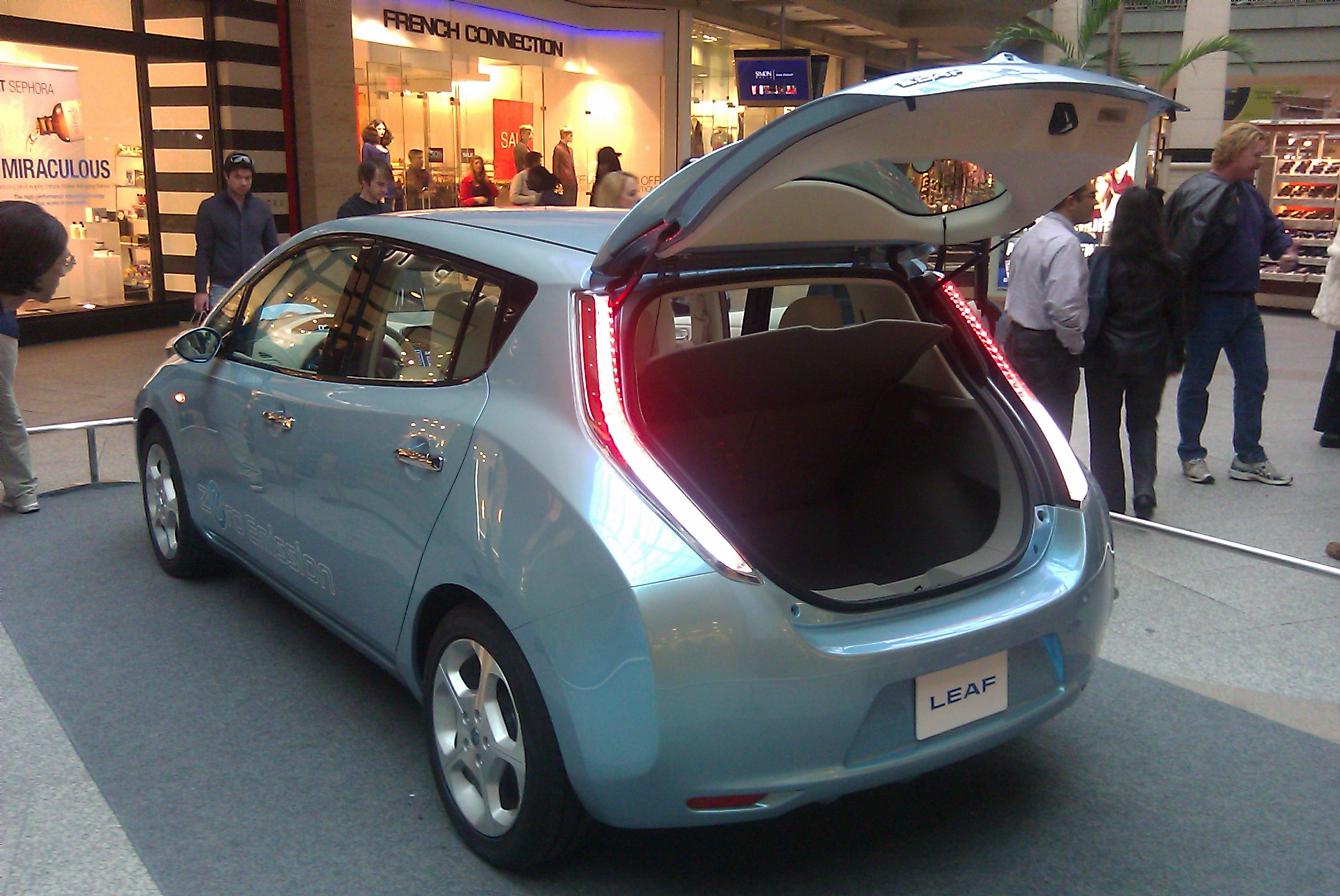 While the GM Volt was announced over three years ago, Nissan didn’t say a thing about their plans until surprising us just months ago (August 2009) with The Nissan LEAF. This is a pure EV — all battery and motor, no gas generator or gas tank like the Volt or other hybrid cars. It looks like a Versa, if you’ve seen that Nissan hatchback.
While the GM Volt was announced over three years ago, Nissan didn’t say a thing about their plans until surprising us just months ago (August 2009) with The Nissan LEAF. This is a pure EV — all battery and motor, no gas generator or gas tank like the Volt or other hybrid cars. It looks like a Versa, if you’ve seen that Nissan hatchback.
 So the Nissan will be the next car to market, beating the Volt by a couple months, and it may come out in higher volumes and steal the show from the Volt. That said, it is a pure EV, with no “range extender” gasoline generator, so people are going to be swimming in “range anxiety” and frankly it’s not a car that you’re going to use for long trips, at least not for a few years until charging stations become far more widespread. The maximum range is 100 miles, after which it’ll need several hours to recharge. Right now this is typical for EVs.
So the Nissan will be the next car to market, beating the Volt by a couple months, and it may come out in higher volumes and steal the show from the Volt. That said, it is a pure EV, with no “range extender” gasoline generator, so people are going to be swimming in “range anxiety” and frankly it’s not a car that you’re going to use for long trips, at least not for a few years until charging stations become far more widespread. The maximum range is 100 miles, after which it’ll need several hours to recharge. Right now this is typical for EVs.
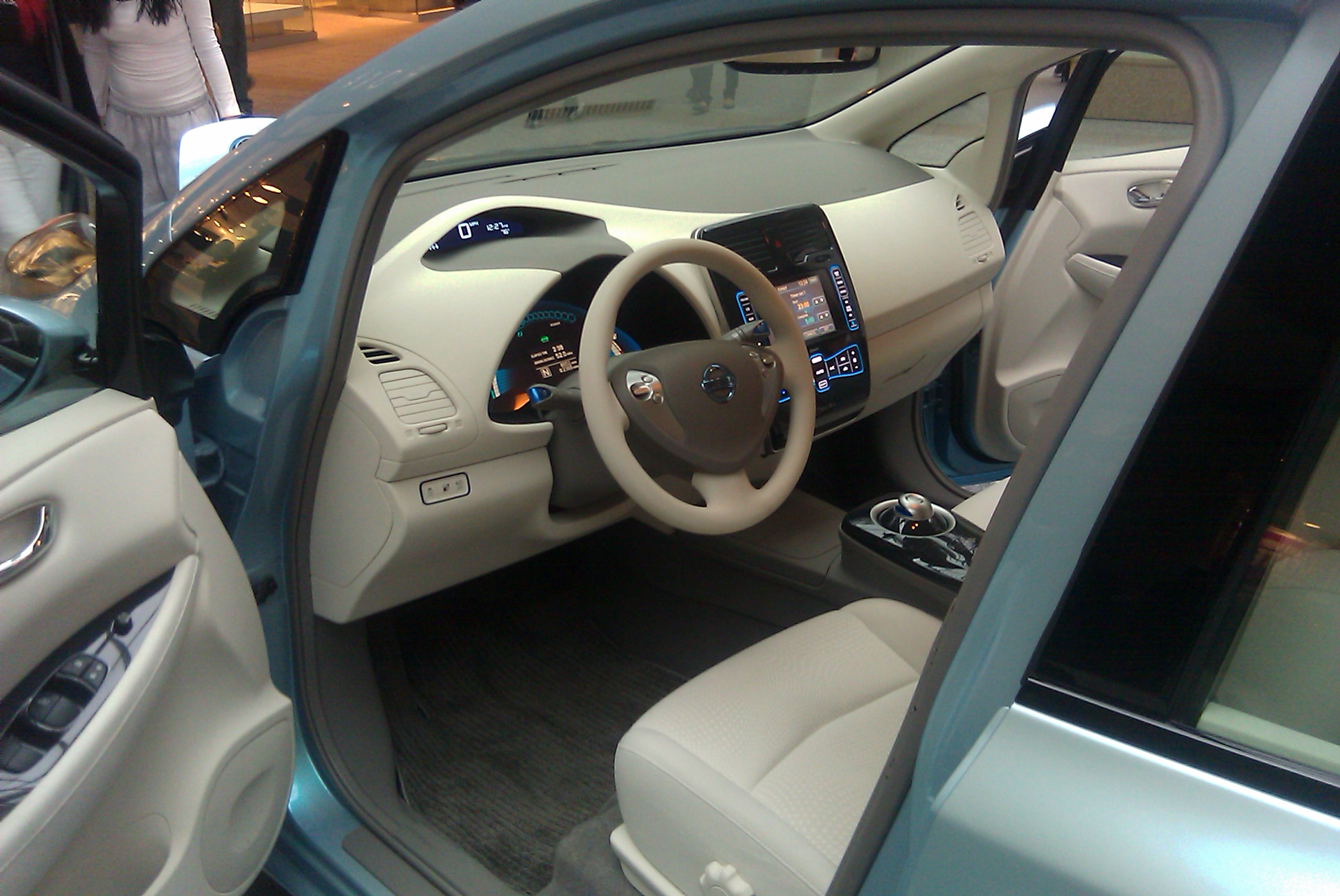 Nissan is doing a roadshow with this car, the “Zero Emission Tour”, and it passed through Atlanta last weekend. They had the car set up for viewing in Lenox Mall, with a posse of young shiny PR droids standing around smiling and answering questions. You couldn’t actually touch the car, much less get in it — they had it roped off. But you could get a good look at it and see that this thing is real and it’s coming.
Nissan is doing a roadshow with this car, the “Zero Emission Tour”, and it passed through Atlanta last weekend. They had the car set up for viewing in Lenox Mall, with a posse of young shiny PR droids standing around smiling and answering questions. You couldn’t actually touch the car, much less get in it — they had it roped off. But you could get a good look at it and see that this thing is real and it’s coming. 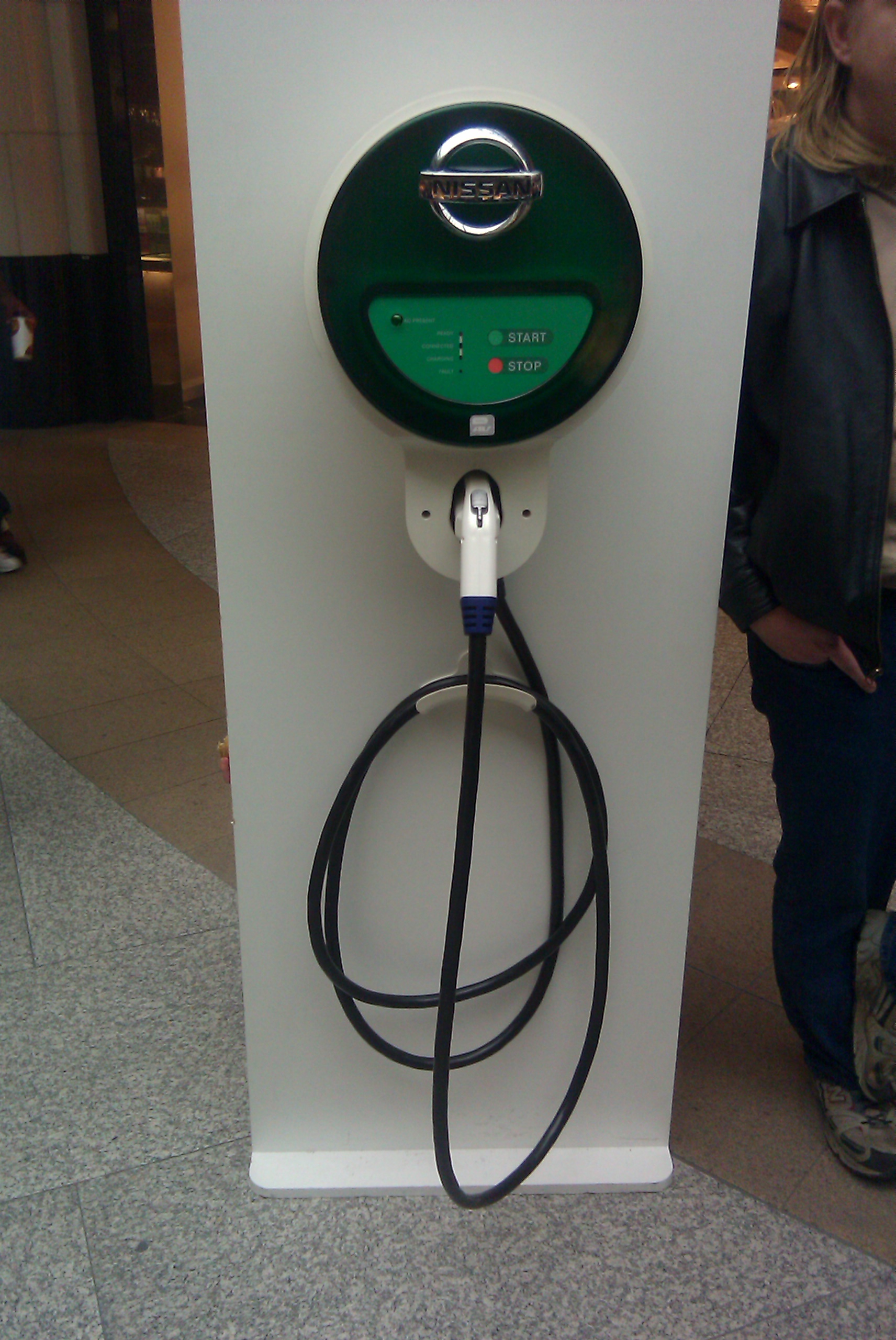 They also had a charger stand. This is the thing that you’d have mounted in your garage, wired to your house power like a clothes dryer or electric oven. The “nozzle” plugs into the charging port in front of the car. Typically you’d leave it plugged in overnight and have it all charged up for you in the morning, ready for up to 100 miles of driving. The cost of electricity is nearly negligible, say a dollar or or two for a fill up.
They also had a charger stand. This is the thing that you’d have mounted in your garage, wired to your house power like a clothes dryer or electric oven. The “nozzle” plugs into the charging port in front of the car. Typically you’d leave it plugged in overnight and have it all charged up for you in the morning, ready for up to 100 miles of driving. The cost of electricity is nearly negligible, say a dollar or or two for a fill up.
This close up photo of the charging port on the car shows that it actually has two ports. The one on the right is the new US standard, called SAE J1772, that all electric cars will be incorporating starting this year.  For scale, that’s about the size of a silver dollar. Up to now there have been half a dozen different plug types, basically one for each car maker, and none compatible with each other. Now with this new plug standard, we can start building out public charging infrastructure. The port on the left is an older Japanese standard, I think.
For scale, that’s about the size of a silver dollar. Up to now there have been half a dozen different plug types, basically one for each car maker, and none compatible with each other. Now with this new plug standard, we can start building out public charging infrastructure. The port on the left is an older Japanese standard, I think.
All this is very interesting and all, but there’s pretty much no chance that I personally will be getting this car. It’s got the same god-awful ugly styling of the Versa, meaning … emasculating. Further it’s got the get-up-and-go performance you’d expect from a family hatchback — meaning not much. Sure, 0-60 in 8.5 seconds is brisk, but I know what EVs are capable of and I want gut-clenching acceleration in mine, thank you. For me, that’s half the allure of the entire enterprise!
Getting closer!
 Five years ago today, on January 14th, 2005, NASA’s Cassini probe at Saturn raced past Titan and deployed ESA’s Huygens probe to descend into that moon’s murky atmosphere. The probe was designed to only last a couple hours, long enough to parachute slowly down through the atmosphere, hopefully survive the impact on the ground, and then report what it saw at the surface for a few minutes before its batteries died or it sunk in the muck or who knows what. After months of analyzing the results, the scientists released these two astounding videos showing what this strange world looked like.
Five years ago today, on January 14th, 2005, NASA’s Cassini probe at Saturn raced past Titan and deployed ESA’s Huygens probe to descend into that moon’s murky atmosphere. The probe was designed to only last a couple hours, long enough to parachute slowly down through the atmosphere, hopefully survive the impact on the ground, and then report what it saw at the surface for a few minutes before its batteries died or it sunk in the muck or who knows what. After months of analyzing the results, the scientists released these two astounding videos showing what this strange world looked like. 1. This 5-minute video collects the actual pictures that were taken by Huygens during the descent and creates a virtual movie out of them. With narration describing the descent (so turn up your volume!), you should first watch this video to get a sense of what was happening during the descent, and then continue to the real killer item below
1. This 5-minute video collects the actual pictures that were taken by Huygens during the descent and creates a virtual movie out of them. With narration describing the descent (so turn up your volume!), you should first watch this video to get a sense of what was happening during the descent, and then continue to the real killer item below 2. Here’s the one that this blog posting is really about. This is an absolutely incredible view of all of the data that came back from Huygens during the descent. You can watch it all the way through and still not fully absorb all the types of information it is presenting to you. Truly a tour de force in scientific data visualization, and possibly the most amazing video I’ve ever seen in my life.
2. Here’s the one that this blog posting is really about. This is an absolutely incredible view of all of the data that came back from Huygens during the descent. You can watch it all the way through and still not fully absorb all the types of information it is presenting to you. Truly a tour de force in scientific data visualization, and possibly the most amazing video I’ve ever seen in my life.